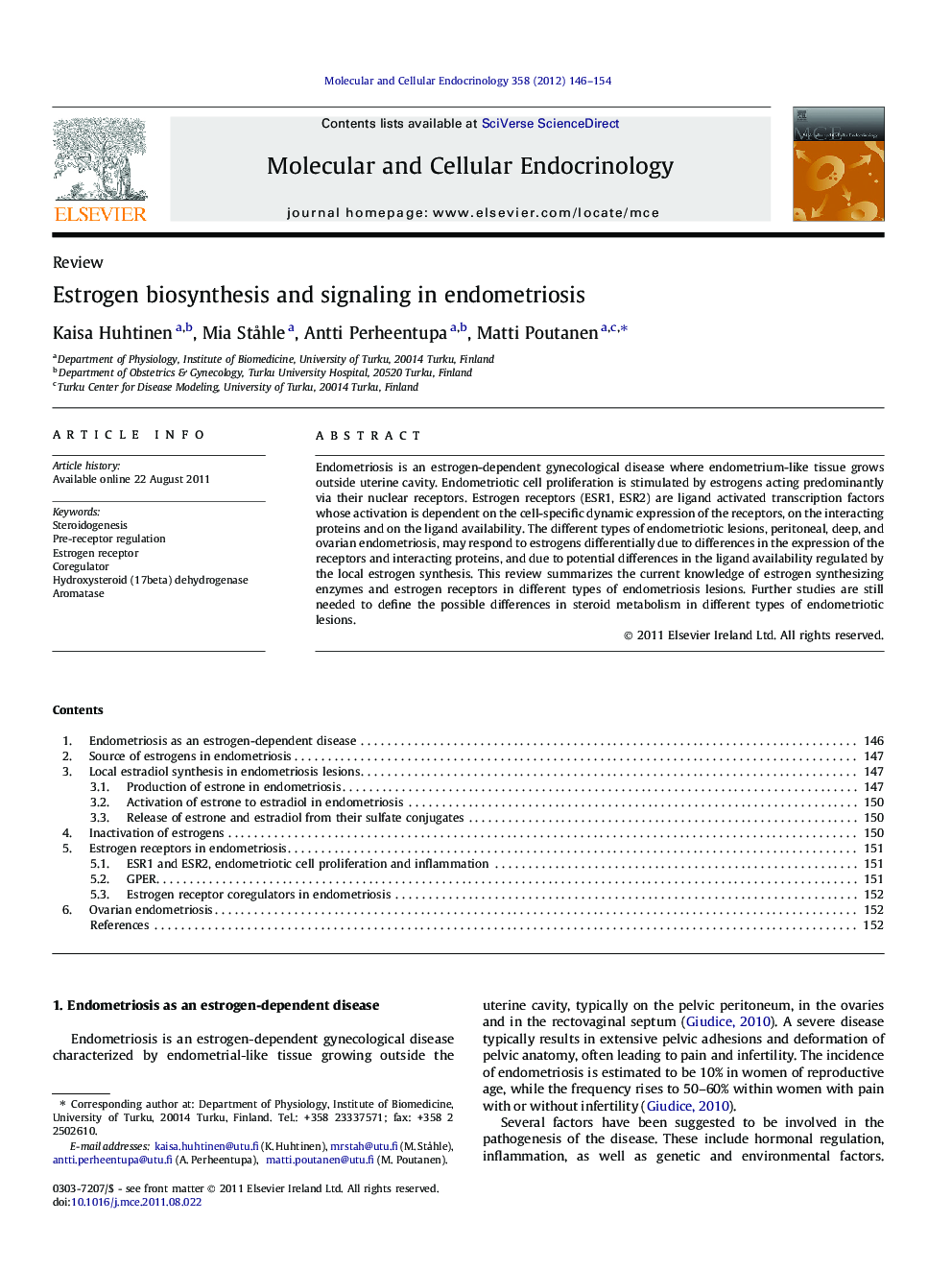| Article ID | Journal | Published Year | Pages | File Type |
|---|---|---|---|---|
| 2196337 | Molecular and Cellular Endocrinology | 2012 | 9 Pages |
Endometriosis is an estrogen-dependent gynecological disease where endometrium-like tissue grows outside uterine cavity. Endometriotic cell proliferation is stimulated by estrogens acting predominantly via their nuclear receptors. Estrogen receptors (ESR1, ESR2) are ligand activated transcription factors whose activation is dependent on the cell-specific dynamic expression of the receptors, on the interacting proteins and on the ligand availability. The different types of endometriotic lesions, peritoneal, deep, and ovarian endometriosis, may respond to estrogens differentially due to differences in the expression of the receptors and interacting proteins, and due to potential differences in the ligand availability regulated by the local estrogen synthesis. This review summarizes the current knowledge of estrogen synthesizing enzymes and estrogen receptors in different types of endometriosis lesions. Further studies are still needed to define the possible differences in steroid metabolism in different types of endometriotic lesions.
► Local production of estrogens promotes endometriotic cell growth. ► Progesterone resistance leads to decreased inactivation of estradiol. ► Non-conventional estrogen signaling may participate in E2 action in endometriosis. ► Impaired ESR and coregulator action may influence endometriosis growth. ► Comparative analysis of E2 synthesizing enzymes in endometriosis subtypes is needed.
